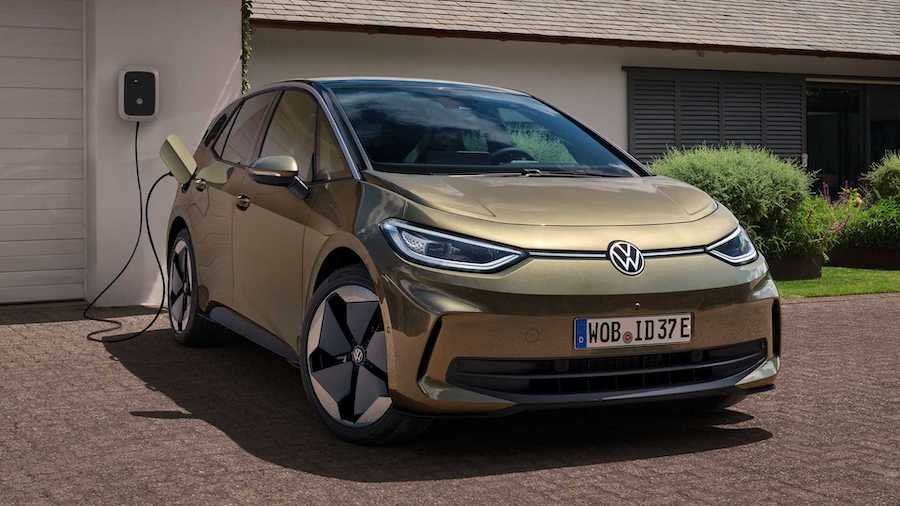Volkswagen ID 3 facelift brings design and infotainment overhaul

Volkswagen has unveiled the keenly anticipated facelifted ID 3, brought to market earlier than planned in reaction to well-publicised issues with the electric family hatchback’s software and interior quality.
Chunky revisions mean the Volkswagen ID 3 “is taking a significant and noticeable leap forward in terms of quality, materials and system stability”, Volkswagen CEO Thomas Schäfer told Autocar in October last year, adding: “We’ve listened very carefully to the ID 3 community. [The facelifted ID 3 is] a car that delivers what the Volkswagen brand promises.”
Most notably, the ID 3 now features the latest generation of Volkswagen’s ID software package, with revised menus that are intended to reduce complexity and engender a smoother user experience.
It is displayed on a 12.0in central touchscreen, in place of the 10.0in unit fitted before. The optional cloud-based speech-recognition system has been upgraded to provide it with faster reaction times, while the head-up display now supports augmented reality functions first seen on the Volkswagen ID 4.
Higher-grade materials, such as better-quality plastic with revised graining on the lower section of the dashboard, make their way inside as well. Higher-specified models also receive new materials for the upper part of the dashboard.
The problems that have plagued the ID 3 – concerning usage of the safety features and touch-sensitive icons, in addition to charging issues and range discrepancies – are so significant that they are widely rumoured to have been the reason for Herbert Diess stepping down as Volkswagen CEO last year.
Software development delays led to early examples of the ID 3 using basic versions of the ID operating system, but this proved, according to company insiders, to be an “absolute disaster”.
Volkswagen has since been trying to rectify the wide ranging issues. As such, the updates were brought forward to just three-and-a-half years since the ID 3 was revealed at the last Frankfurt motor show.
The ID 3’s exterior has been given a refresh, too, aimed at increasing the appeal of the hatchback, which has accounted for a claimed 300,000 sales since the start of deliveries during the third quarter of 2020.
Among these is a re-profiled front bumper with vertical air ducts as well as a reshaped bonnet, the latter being an all-new pressing that does away with the black panel below the windscreen to give the ID 3 an elongated appearance and a slightly improved drag coefficient.
The tail-light designs are all-new as well, including distinctive X-shaped daytime-running lights and refreshed scrolling indicators.
The ID 3 is still based on the MEB platform and retains the same rear-mounted motor and batteries as before. However, in a bid to streamline production, the line-up has been reduced, with Pro and Pro S the only specifications to be offered when sales start this month.
With 204bhp and 228lb ft, the Pro and Pro S cars deliver 0-62mph times of 7.3sec and 7.7sec. The former features a 58kWh battery, giving it a range of 265 miles, and the latter a 77kWh pack for 339 miles.
In line with changes made to the larger ID 4, Volkswagen has increased the ID 3’s maximum DC rapid-charging rate from 125kW to 170kW.
Volkswagen says there are plans for a successor to the previous price-leading ID 3 Pure with a 148bhp electric motor and a 45kWh battery, but it won’t form part of the initial facelifted line-up.
